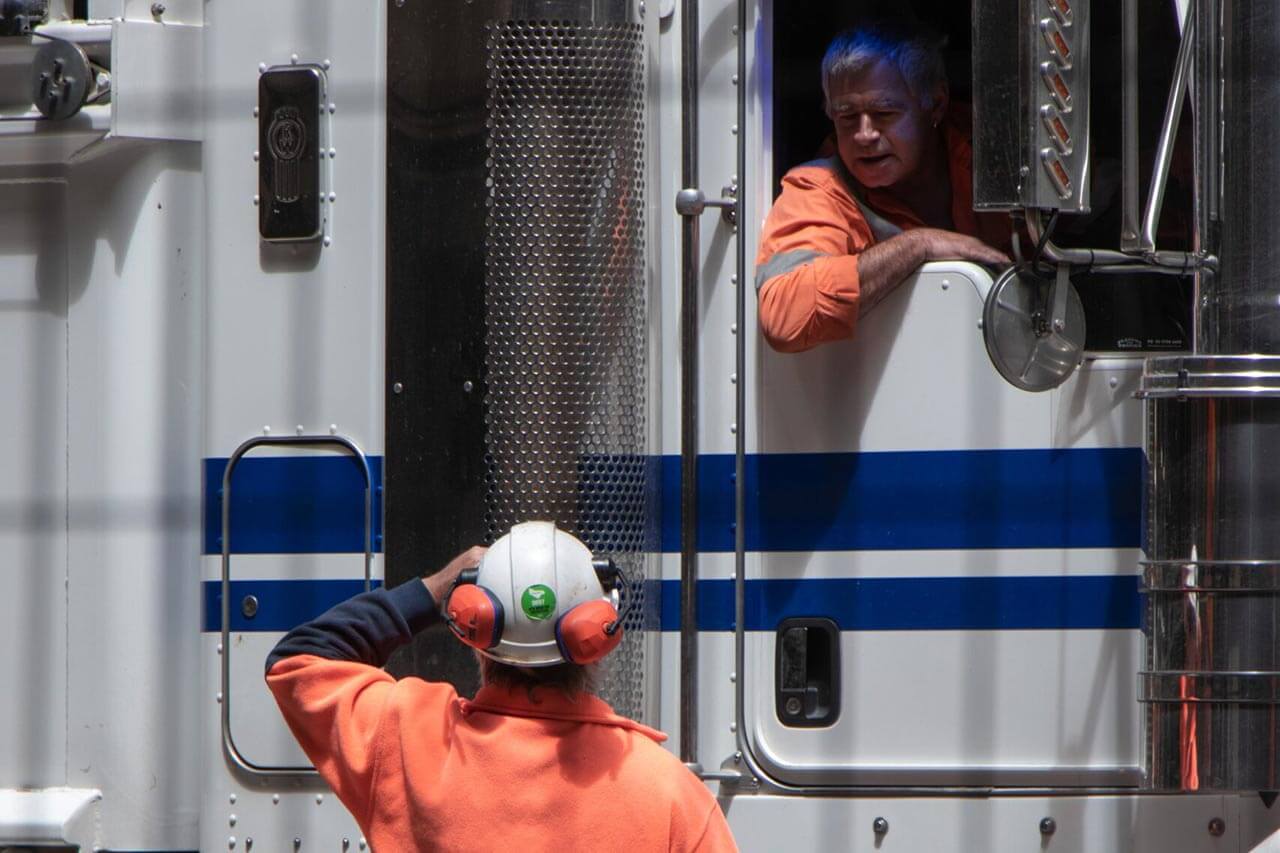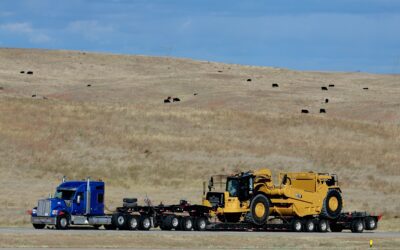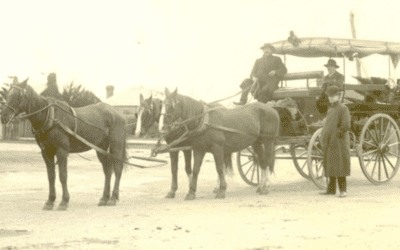The trucking industry is the backbone of the nation’s economy. In fact, the trucking industry alone earned $875.5 billion in revenue. Every entity involved in the domestic supply chain should be paying attention to the dwindling number of drivers. The trucking industry has a long and rich history in America. It’s weathered many challenges along the way. With proper care and attention, it can continue to keep our economy strong.
The trucking industry has a massive role in the United States economy. Over 80% of the nation’s communities rely almost exclusively on truck drivers to deliver their everyday goods. Without them, our infrastructure would come to a standstill.
Despite their importance, there is still a shortage of drivers in the U.S. workforce. Inadequate pay is often cited as one of the main elements driving the massive departure of drivers from the industry. However, other factors such as aging drivers and undesirable working conditions contribute to the issue. Even with a shortage of drivers, the trucking industry is expected to continue growing over the next decade.
Article Overview
Recent Trucking Trends
Trucks are responsible for a staggering amount of the nation’s freight and economy. Over 75% of the total freight in the U.S. is moved by truck drivers. That amounted to $732.3 billion for the U.S. economy in 2020, which was 80% of the nation’s total consumption.
The trucking industry is also responsible for a majority of the freight moved across America’s borders. Trucks move 67.7% of goods between the U.S. and Canada and 83.1% of freight between the U.S. and Mexico. In total, drivers average more than 100,000 miles driven over a year between all three countries. Trade within and between North American countries rely heavily on the trucking industry to keep their economies running smoothly.
Most carriers are relatively small businesses
There are nearly 2 million trucking carriers in operation in the United States, but almost 98% of them currently have less than 20 trucks in their fleet. Nearly 92% of them only have five or fewer trucks.
The trucking industry is highly competitive due to the number of companies to choose from in the industry. Shippers usually strive to keep costs down; they aren’t afraid to take the best offer from another carrier. In addition, drivers from large companies can transfer to another carrier company or even start their own. Because of this, small trucking companies have been able to compete with the giants in the industry.
With so many carriers currently in business, it’s no wonder the trucking industry employs millions of Americans. There are 8.4 million people employed throughout the economy in trucking jobs. That’s 1 out of every 16 working American citizens. 3.6 million of these are truck drivers, and the rest are dispatchers, mechanics, warehouse workers, and anyone else who keeps the industry running.
One glaring statistic, however, is the average age of drivers in the workforce. Most drivers are close to 50 years old. This represents a major factor leading to one of the industry’s biggest challenges: driver shortages.

Driver Shortage
The shortage of drivers is the chief issue at the heart of the trucking industry. The American Trucking Associations (ATA) began monitoring the situation in 2015, but it’s only worse. In 2022, the ATA estimated a driver shortage of over 80,000 drivers, and it will continue to drop from 64,000 for the rest of 2023. That number could reach as high as 160,000 by 2030 at the current rate. This is an alarming statistic when considering how reliant the U.S. economy has become on the trucking industry.
Insufficient pay is often cited as a key factor in the shortage. However, in 2021, many drivers’ salaries were increased to meet the demand that rose after pandemic regulations were lifted. More than 90% of carriers increased their pay, and many of them also offered sign-on bonuses. Median driver pay rose 18% from 2020 to 2021, but these improvements did not solve the problem. The shortage persists despite addressing the issue of salary.
As mentioned previously, the average age of truck drivers is climbing to unsustainably high numbers. The industry is struggling to replace drivers as they age closer to retirement, and young drivers seem to be in short supply.
Only 7% of drivers are under the age of 25, but nearly 31% are over 55. Over half of new truck drivers hired are onboarded to replace retired drivers. This low renewal rate is one of the driving factors of the shortage, as the workforce is aging out of the profession with unequal people to replace them.
The industry has also struggled to attract more women into trucking
Women make up 7.8% of truck drivers in the U.S. Globally, they only account for 3% of total drivers. The International Road Transport Union (IRU) lists a lack of infrastructure, poor treatment at pickup and delivery sites, and long hours away from home as reasons for the low representation of women in the trucking industry.
Working conditions are not just affecting the hiring of women, however. Turnover rates averaged 94% at some larger FTL companies between 1994 and 2017. Drivers cited poor health benefits (or no benefits), long periods away from home, and paying their fuel costs as reasons for leaving their carrier or leaving the entire industry.
Many drivers are in their trucks for 60-70 hours a week but are only paid for driving time. Drivers will often spend a disproportionate amount of the week in their trucks waiting to be loaded or unloaded, resting, or driving to their next pickup. Drivers are expected to be away from home for most of the week but are not compensated for every hour they are forced to spend inside their cabin.
The Trucking Industry is Expected to Continue Growing
Even with a shortage in effect, the trucking industry is expected to continue growing. For 2022, for-hire tonnage was up 3.4% which was the best annual gain since 2018. In addition, the OTA forecasts that the trucking industry will account for over 82% of total freight revenue next year.
The driver shortage could play an even bigger role in the industry’s growth if not solved soon. The need for truck drivers is projected to increase by 6% over the next decade. This projection is in line with the growing number of online orders throughout the country, especially since 2020.
The online grocery market is expected to account for 20% of the total U.S. grocery market by 2026. More people are ordering online than at any other time in U.S. history. The trucking industry will need to solve the issue of driver shortages if they hope to keep up with increasing demand.
As part of its continued growth, the trucking industry has dipped its toe into the automated sector. Self-driving vehicles are slowly making their way onto the roads, with self-driving trucks not far behind. The market for automated trucks is projected to increase by 18.6% by 2025. Many carriers believe that their fleets may be driverless as early as 2040.
Self-driving fleets may one day solve the issue of driver shortages
They also come with many environmental and financial incentives. TuSimple, a manufacturer of driverless trucks in San Diego, estimates that its technology could save $10 billion in annual fuel costs. They also claim that self-driving trucks could reduce emissions by 42 million metric tons of CO2 per year. The future of the trucking industry is not only automated, but it’s also far more efficient than anything on the road today. Unless carriers find a way to attract more drivers, it appears that automation will soon dominate the trucking industry.
Who’s behind the wheel may change in the future, but the trucking industry will likely continue to prosper. Truck drivers are responsible for delivering a massive amount of goods and products to the nation’s communities. They account for the grand majority of freight moved across the border between Mexico and Canada. The industry is vitally important to the country’s infrastructure, and it provides millions of jobs for American citizens.
Although there may not be enough drivers to fill those jobs, the nation will continue to rely on trucks every single day. This isn’t the first obstacle the industry has faced, and it certainly won’t be the last. With proper planning and attention, it can overcome and continue to grow.






